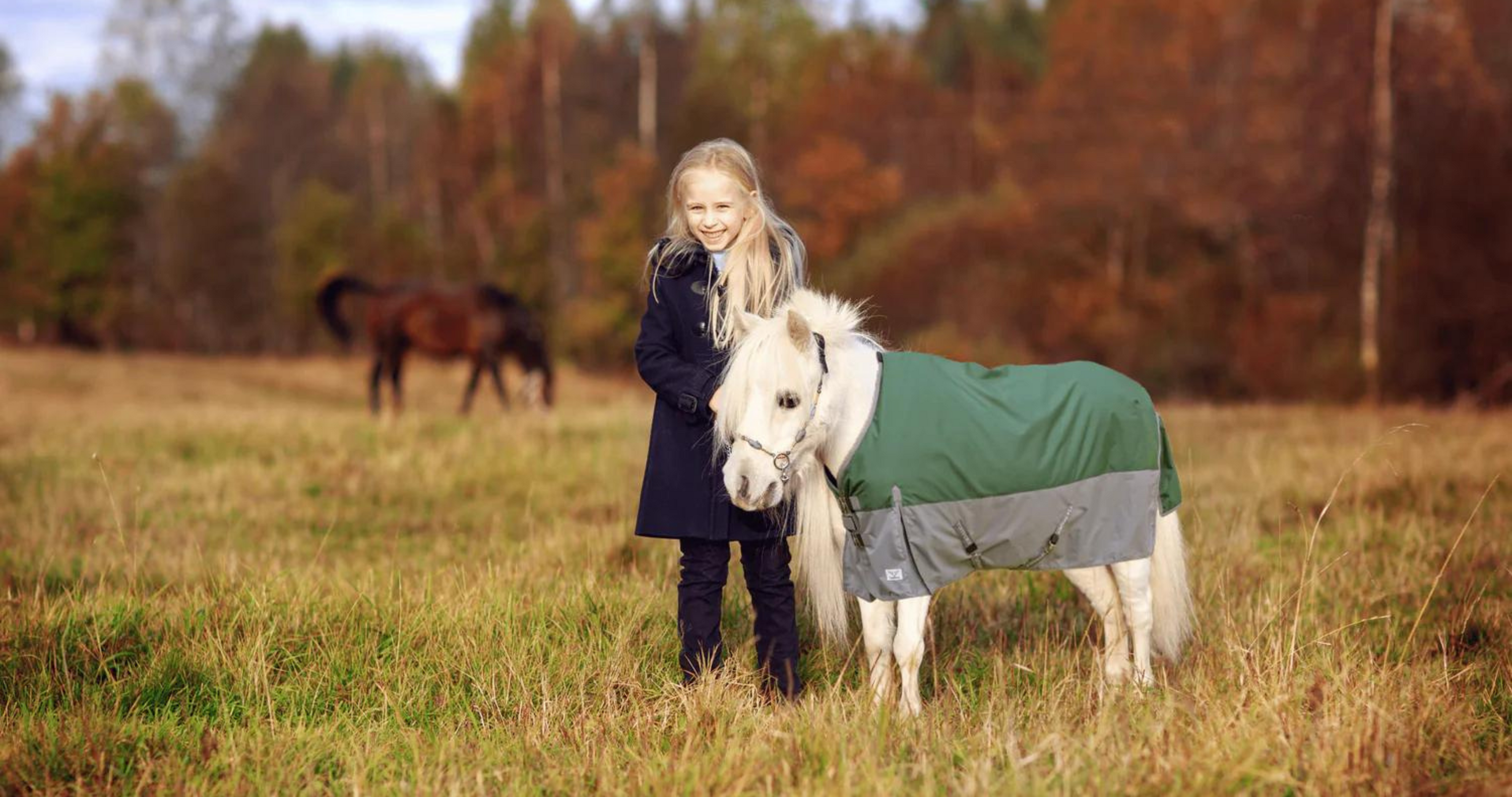Have you noticed the sky getting darker a little earlier each night? We hate to be the bearer of bad news… but winter is coming. Don’t get caught by surprise. Take inventory of your winter horse blankets now before the cold really sets in.
Buying horse blankets isn’t as simple as it sounds. You’ll find yourself asking lots of different questions, none of which have a straightforward answer. What blankets to buy and when to use them depends on your individual horse’s needs, as well as your climate, and your horse management style.
What temperature does a horse need a blanket?

As the weather begins to hit temperatures in the 50s overnight, you’ll find yourself asking, ‘Is it time to blanket? How will I know when to start blanketing?’ The answer is largely dependent on your horse. If your horse is slow to grow in a winter coat, they’re more likely to need a blanket in the early fall versus in the middle of winter when it’s much colder, but they have a coat like a Yak.
To know when you should pull out your horse sheets, pay close attention to your horse. Are they starting to shiver when you bring them in in the morning? Do they seem like they’re losing weight? If the answer to either of these questions is yes, then you should absolutely start blanketing your horse immediately. On the other hand, if your horse is growing in their fluffy winter coat and they tend to carry a layer of fat, they may not need a blanket at all.
On average, most horses will start to need some sort of blanket when the temperature drops to around 40 degrees.
What are two main types of horse blankets?
In general, the two main types of horse blankets are horse sheets and horse blankets. Think of the difference between the two categories as rain coats versus winter jackets.
Horse sheets are like rain coats. They prevent your horse from getting wet and may hold in a very small amount of heat, but don’t do much to keep your horse warm on a cold day. Horse sheets are best used in rainy or snowy weather for horses who already have a good winter coat, or when it’s raining, but warm enough that they do not need the added warmth of a horse blanket.
A horse blanket is like a winter jacket. Just like winter coats for humans, horse blankets come in varying degrees of weight, from lightweight to heavyweight. A lightweight horse blanket has anywhere from 100 to 200 grams of insulation inside, while a heavyweight would have anywhere from 350 to 400+ grams. Horse blankets are either designed for turnout or stable use. The turnout horse blankets have a heavy duty waterproof outer shell to keep the horse dry and to withstand the pasture environment. Stable blankets are like a fleece or sweatshirt, they are not waterproof, but provide warmth.
How heavy of a blanket should I put on my horse?
As a very general rule of thumb, lightweight horse blankets are best used between 30 and 45 degrees, depending on your horse. Medium weight horse blankets should be used when temperatures drop below freezing, and heavyweight horse blankets should be used when the temperature drops into the teens or below.
Choosing the right blanket for your horse depends on your horse’s breed, weight, age, environment, and lifestyle. Some horses won’t need horse blankets at all, like the heavier draft breeds and warmbloods. Other horses that don’t grow much of a coat, like Thoroughbreds and Arabians, will probably need to be blanketed.
If your horse lives outside 24/7, they are more likely to need a heavier blanket than a horse that is stalled with other horses in a sheltered barn at night. Horses that are older or struggle to maintain their weight will need a heavier blanket than younger horses or obese horses.
How to pick a horse blanket?
Choose your horse blankets based on your horse’s body type. For example, if your horse is built more upright with a high neck carriage, you may want to look into the TuffRider Comfy-Fit Medium Weight Standard Neck Turnout Blanket w/ Adjustable Neck Opening. This horse blanket offers adjustable neck straps so you can raise and lower the opening of the blanket for a snugger and more comfortable fit around your horse’s neck, shoulders, and chest.
If you live in a very cold climate, look for horse blankets that allow you to add additional coverage in colder weather. For example, the TuffRider 1200 D Winter Comfy Heavy Weight Detachable Neck Turnout Blanket allows you to add a neck cover so your horse is warm from their nose to their tail on the coldest winter nights.
Is your horse a big mover who loves to gallop around the pasture? Make sure you choose a horse blanket with a large shoulder gusset to allow them full freedom of movement. The Weatherbeeta Comfitec Essential Standard Neck Lite features a side gusset that allows for natural movement. Plus, this horse blanket is also lined with smooth and durable polyester to prevent rubbing or chafing on your horse’s shoulders.





